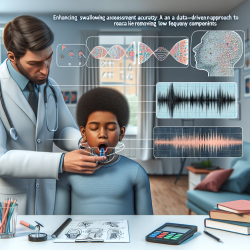Introduction
In the ever-evolving landscape of education, the importance of Social-Emotional Learning (SEL) programs cannot be overstated. Recent research, particularly the study titled "Social–Emotional Learning for Whom? Implications of a Universal SEL Program and Teacher Well-being for Teachers’ Interactions with Students," sheds light on the profound impact of SEL programs not only on students but also on teachers. This blog explores the findings of this study and offers insights into how educators can leverage SEL to improve their interactions with students and enhance their own well-being.
The Role of SEL in Enhancing Classroom Dynamics
SEL interventions are designed to improve classroom dynamics by fostering students' social-emotional competencies. These competencies include the ability to identify and regulate emotions, engage in perspective-taking, and make responsible decisions. While much of the focus has traditionally been on student outcomes, the role of teachers in implementing these programs is crucial. The study in question utilized data from the Social Skills Improvement System SEL Edition Classwide Intervention Program (SSIS SEL CIP) to examine the impact of SEL on teacher-student interactions.
Key Findings
The study revealed several important findings:
- Positive Impact on Classroom Organization: Teachers who implemented the SSIS SEL CIP showed improved classroom organization skills. This includes better behavior management and productive use of classroom learning time.
- Buffer Against Low Emotional Well-being: Teachers in the intervention group who reported lower emotional well-being did not show a decline in classroom organization skills, unlike their counterparts in the control group. This suggests that SEL programs can buffer against the negative effects of reduced teacher well-being.
Implications for Practitioners
For educators and school administrators, these findings underscore the value of integrating SEL programs into the curriculum. Here are some practical steps to consider:
- Implement SEL Programs: Schools should consider adopting comprehensive SEL programs like the SSIS SEL CIP to enhance both student and teacher outcomes.
- Focus on Teacher Well-being: Support systems should be in place to address teacher well-being, as it significantly impacts classroom interactions and student learning.
- Professional Development: Provide teachers with training and resources to effectively implement SEL strategies and manage classroom dynamics.
Encouraging Further Research
While the study provides valuable insights, it also opens avenues for further research. Understanding the long-term effects of SEL programs on teacher well-being and classroom interactions is crucial. Additionally, exploring the integration of SEL with mental health supports for teachers could provide a more holistic approach to improving educational outcomes.
Conclusion
The implementation of SEL programs holds promise not only for enhancing student outcomes but also for supporting teacher well-being and improving classroom interactions. By embracing SEL, educators can create a more supportive and effective learning environment.
To read the original research paper, please follow this link: Social–Emotional Learning for Whom? Implications of a Universal SEL Program and Teacher Well-being for Teachers’ Interactions with Students.










